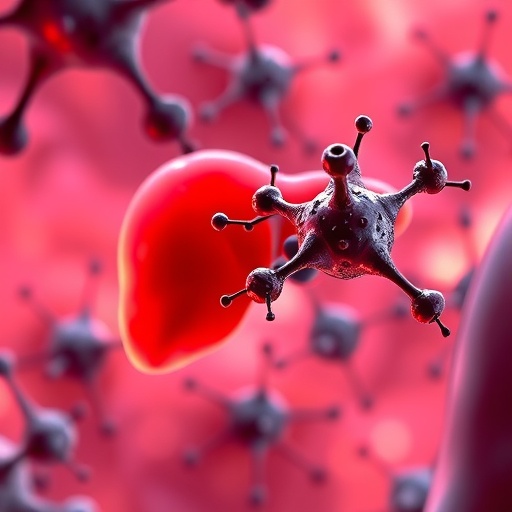Liver disease remains a pervasive global health challenge, predominantly triggered by factors such as chronic alcohol consumption, hepatic steatosis linked to metabolic disorders including obesity and diabetes, and viral infections like hepatitis B and C. However, emerging research from Keck Medicine of USC reveals an environmental chemical, tetrachloroethylene (PCE), as a significant yet underrecognized contributor to liver pathology. Dr. Brian P. Lee, MD, MAS, a hepatologist and liver transplant specialist, spearheaded a groundbreaking study recently published in Liver International that elucidates the connection between PCE exposure and the manifestation of severe liver fibrosis in humans.
Tetrachloroethylene, also known as perchloroethylene, is a synthetic chlorinated solvent extensively used in the dry cleaning industry and present in various consumer products including adhesives for arts and crafts, spot removers, and polishes, particularly those targeting stainless steel surfaces. Despite its widespread usage, PCE is a volatile organic compound that persists in the environment, capable of leaching into soil and groundwater, thereby entering human systems indirectly through contaminated drinking water or inhalation of vaporous emissions from dry-cleaned fabrics.
This novel investigation utilized data extracted from the National Health and Nutrition Examination Survey (NHANES), focusing on adults aged 20 and older within the 2017-2020 cohort. The researchers measured the concentration of PCE in participants’ blood samples, identifying that approximately 7% of the sampled population had detectable levels of the chemical. The presence and concentration of PCE were then correlated with clinical markers indicative of liver fibrosis, a condition marked by the excessive accumulation of extracellular matrix proteins, especially collagen, that disrupts normal hepatic architecture and function.
The study’s findings are striking: individuals with measurable PCE blood concentrations exhibited a threefold increase in the likelihood of significant liver fibrosis compared to those without PCE exposure. Intriguingly, this association remained robust even after adjusting for conventional hepatic risk factors such as age, gender, race, ethnicity, and educational background, suggesting an independent hepatotoxic effect of PCE. Moreover, the risk scaled proportionally with exposure intensity; for every incremental nanogram per milliliter increase in PCE concentration, the odds of developing substantial fibrosis multiplied fivefold.
From a toxicological standpoint, PCE’s lipophilic nature facilitates its absorption and accumulation in hepatic tissue. Chronic exposure triggers oxidative stress, mitochondrial dysfunction, and activation of hepatic stellate cells—the primary drivers of fibrogenesis. These pathological processes culminate in scar tissue formation, impeding blood flow and hepatic regeneration, thereby heightening susceptibility to liver failure, hepatocellular carcinoma, and ultimately, mortality.
One of the more counterintuitive revelations of the study is the dissociation of PCE-associated fibrosis from classic hepatic insults such as alcohol use and metabolic liver disease. Participants with PCE exposure developed fibrosis independent of these common etiologies, indicating that environmental toxins may represent an underappreciated pathway to liver damage. “Patients often inquire why they have liver disease despite abstaining from alcohol and lacking metabolic risk factors. Our findings point towards environmental exposures like PCE as plausible explanations,” Dr. Lee remarked.
Demographically, the data indicated that individuals from higher-income households were more frequently exposed to PCE, likely reflecting greater utilization of professional dry-cleaning services where PCE remains the solvent of choice despite regulatory efforts. However, occupational hazard also remains significant, as dry cleaning workers experience prolonged, direct contact with the chemical, thereby incurring elevated exposure levels and attendant hepatic risks.
Regulatory bodies, including the United States Environmental Protection Agency (EPA), have recognized PCE’s toxicity, initiating a phased reduction and control of its usage, particularly in dry cleaning processes. The International Agency for Research on Cancer (IARC) classifies PCE as a probable human carcinogen, previously linking it to malignancies such as bladder cancer, multiple myeloma, and non-Hodgkin lymphoma. This study further extends PCE’s carcinogenic profile to include liver fibrosis as a critical intermediate pathology that predisposes to hepatic cancer.
The persistence of PCE in various environments, especially where regulations are lax or non-existent, underscores the global public health implications of these findings. PCE contaminates groundwater sources through improper disposal and accidental spills, posing a chronic exposure risk that may go undetected due to its insidious, odorless nature. This environmental ubiquity demands enhanced surveillance and public health interventions focused on mitigating exposure and preventing liver disease progression linked to this chemical.
In conclusion, this pioneering research compels a paradigm shift in understanding the etiology of liver fibrosis by encompassing environmental toxicants alongside traditional risk factors. Dr. Lee emphasizes the necessity for future studies to explore the broader spectrum of environmental chemicals that may impact hepatic health, potentially informing clinical screening protocols and preventive strategies. Early detection of liver fibrosis in patients with known PCE exposure could markedly improve prognosis through timely therapeutic intervention and reduced progression to end-stage liver disease.
This newly established link between tetrachloroethylene and liver fibrosis highlights the critical intersection of environmental health and hepatology, advocating for multidisciplinary approaches to disease prevention that integrate exposure science, toxicology, and clinical medicine. As awareness grows, it is imperative that both physicians and the public recognize environmental chemical exposures as formidable contributors to liver disease, advancing the cause of liver health in modern society.
Subject of Research: The association between tetrachloroethylene (PCE) exposure and significant liver fibrosis in U.S. adults.
Article Title: Tetrachloroethylene Is Associated With Presence of Significant Liver Fibrosis: A National Cross-Sectional Study in US Adults
Web References:
Image Credits: Photo courtesy of Brian P. Lee, MD, MAS
Keywords: Liver, Public health, Tetrachloroethylene, Liver fibrosis, Environmental toxin, Dry cleaning chemical, Hepatology, Carcinogen, Fibrogenesis, Environmental exposure




